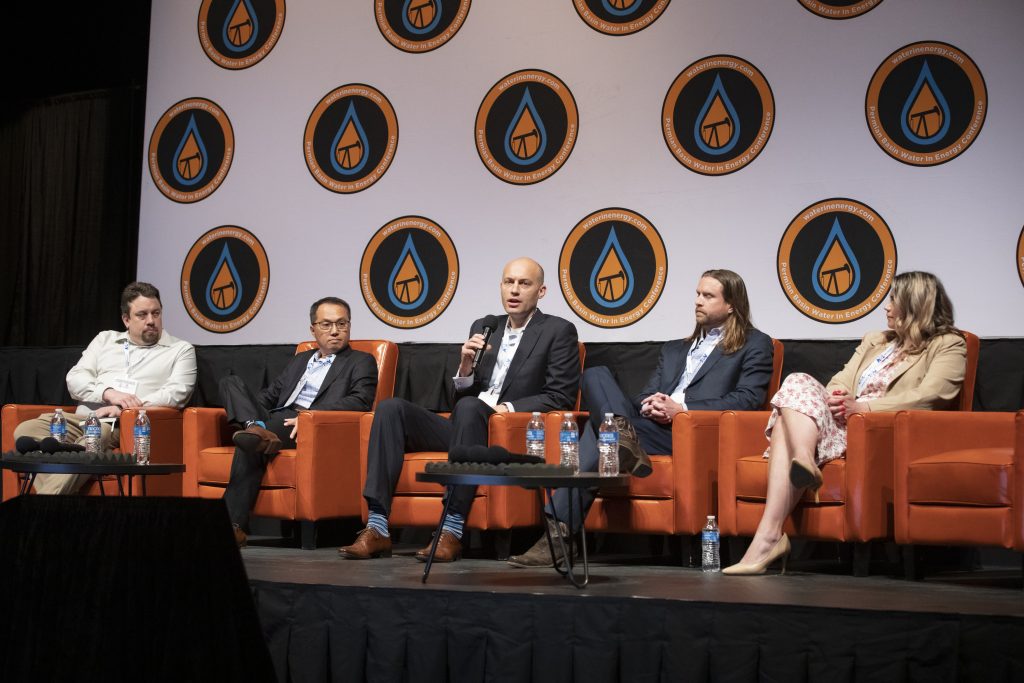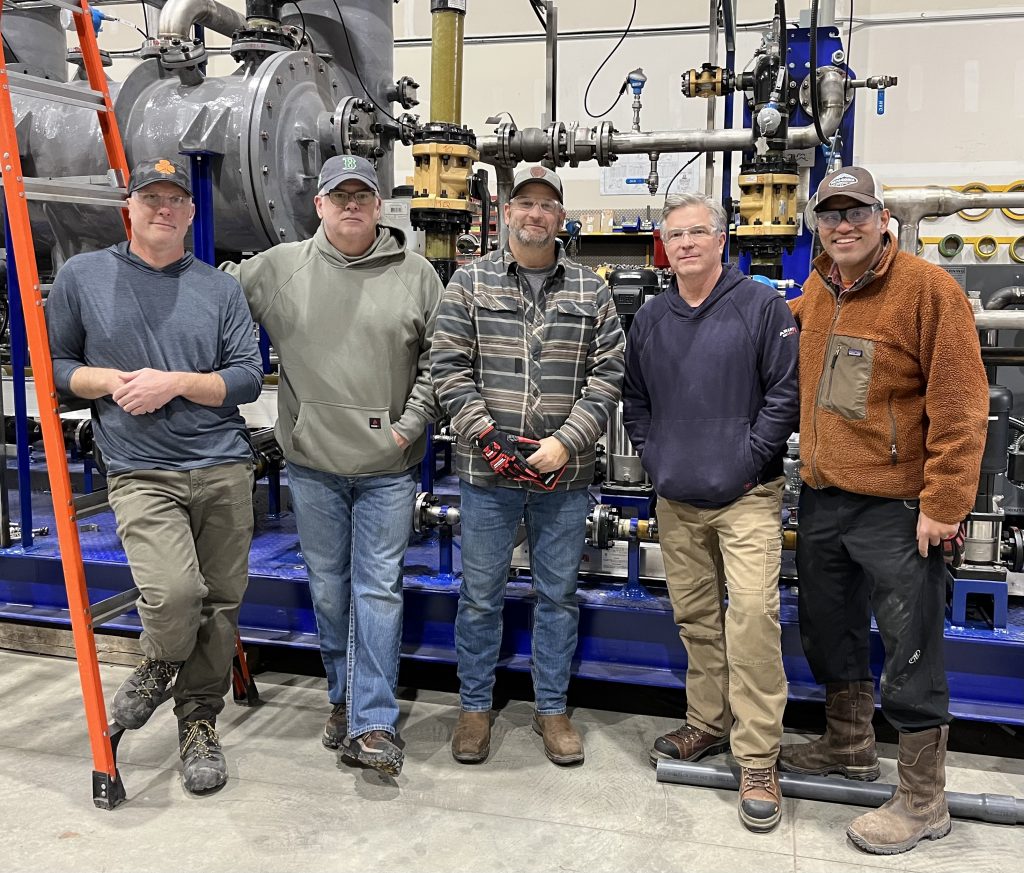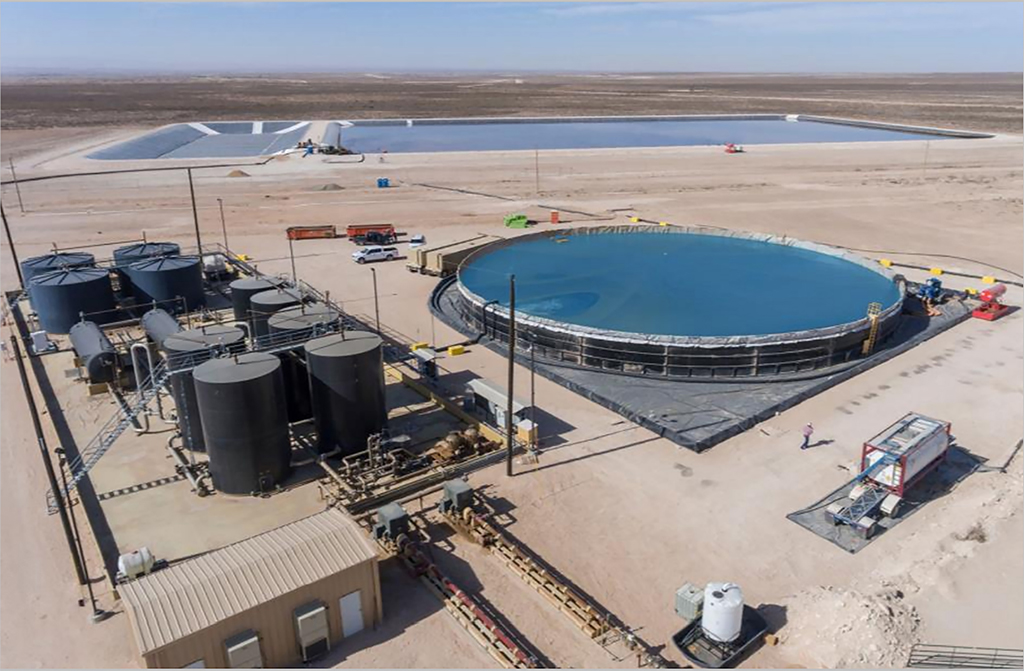An oil well produces three things: oil, natural gas and (mostly) water. All three of those things have to have somewhere to go in order for the well to operate, and right now only two of them are profitable. The last is working its way up from being a nuisance to being a useful byproduct, and the purpose of the Permian Basin Water in Energy Conference (PBWIEC) is to help move that along. This year the conference, sponsored by the University of Texas-Permian Basin’s John Ben Shepperd Leadership Institute, will be March 5-7 at the Bush Convention Center in Midland. On March 5, the welcome reception will be at the UTPB College of Engineering Building. ExxonMobil has signed on as this year’s title sponsor.
University Lands’ Richard Brantley is the 2024 chairman of the board. On a quest to open the conference to new ideas, he has expanded the board to 19 industry leaders, to bring in new energy. He points out that this conference is a nonprofit operation of UTPB, and any income from it goes toward benefitting the students. He is expecting 400-500 attendees in 2024, a typical year.
Among the topics under consideration is a panel discussion on pore pressure buildup due to the massive amounts of saltwater disposal injections (SWD) as production increases, which also affects human-caused seismicity.
The search for ways to redirect produced water from SWD to beneficial use is another likely topic, as there are many water midstream companies teaming with producers and receiving government grants to do just that. Turning produced water into something that could be plugged into other uses, especially in agriculture, would check a lot of boxes, Brantley said.
And as produced water morphs from liability to asset, there are legal issues regarding ownership and responsibility to resolve as well, other ideas that will be discussed at the conference.
Mineral extraction from produced water has been bandied about for a decade or more, and there are a lot of variables in that conversation: are there enough concentrations to make extraction worthwhile, is the technology there yet, and what would be the market for them (how much would they bring in revenue)?

Chevron’s operations project manager Jon Moeller, center, speaks on a panel at least year’s Permian Basin Water in Energy Conference. Also pictured here (from left to right) New Mexico Environment Department’s Jason Herman, ExxonMobile’s Permian Commercial Manager Mark Phan, Infinity Water Solutions CEO Michael Dyson, and Vice President of Beneficial Reuse Whitney Dobson. (Courtesy Photo/ Jacob Ford, The Oilfield Photographer)
Water Issues Continue to Spring Up
With the conference on the agenda for March, PBOG Magazine took the opportunity to hear from industry participants on what solutions they are seeing and working on.
The good news is that oil and gas production from the Permian Basin has averaged record levels since shortly after the Pandemic. The bad news is that the same is true for the produced water associated with those hydrocarbons.
Saltwater disposal wells (SWDs) in the northern Permian have pressured up the formations receiving that water, leading to an increasing amount and intensity of anthropogenic earthquakes. This has shut in or greatly reduced SWDs near Midland/Odessa, Big Spring, and elsewhere, sending at least some of that produced water south to Reagan and Upton counties.
Alternate uses for this water are now currently confined mostly to use in fracs for completing new wells—whose effect is to produce yet more water. And E&Ps in the last 3-4 years have greatly increased the percentage of produced water’s makeup of frac fluids. Many producers use 50 percent to 90 percent produced water, which does offer the benefit of reducing the amount of fresh water consumed. But, said B3 Insight Co-Founder and CEO Kelly Bennett by email, frac use accounts for less than a fourth of the water produced. B3 Insight is a water data and analytics firm.
“According to the B3 Water Balance Report, we estimate 4.7M bbl/d is reused vs 14.6 Mbbl/d disposed on average in 2023 for the Midland and Delaware sub-basins,” he said. Frac use, therefore, accounts for just under 25 percent of the total.
Still, that number is much higher than it used to be, and there are several factors driving that rise. Bennett says ESG (Environmental, Societal, Governance) issues are one driving force, but “market dynamics have been a stronger driver.” For example, “In New Mexico, regulation has made it more difficult to access fresh water AND (emphasis his) dispose wastewater in-state. This has absolutely motivated reuse uptake as a means to deal with excess water.”
He added that this reuse can help reduce seismicity by reducing SWD volumes. But there is also an economic driver, which was not always the case, as treatment costs have come down in recent years. “Lastly, economics provide reuse incentive in most of the basin when you take into account the cost of fresh or brackish water and disposal.” Fresh water use is almost at zero, having been replaced by water from underground brackish sources. He defined brackish water as “Water that is non-potable but could be drinkable if treated, typically between 3,000 and 10,000 ppm total dissolved solids.”
The Pressure Is Mounting
The driving force of seismicity is the increasing formation pressures from injected water. “This has resulted in degradation of disposal capacity in certain locales (many disposal wells reach their pressure limitations before their volume limits). Elevated shallow formation pressure can also significantly affect drilling economics for new oil wells, so understanding and managing pressure dynamics is incredibly important,” he said.
Are Other Reuses Viable?
Can produced water be used for agriculture or something else? Bennett believes bringing those options up to a significant scale, or 1 million barrels per day, will be years in the making. Because disposal is challenged in some areas, and scalable alternatives are still in the future, “That’s a scary thought” to some producers. Will they at some point be faced with shutting in production due to a backlog of produced water? “This is a risk for producers, and highlights the need for industry collaboration and consolidation in the water midstream space,” he said.

From their company’s Facebook page: “It’s ‘all personnel on deck’ at the fabrication shop for the commissioning of Crystal Clearwater Resource’s next-generation plant. Even the executive team is getting their hands dirty!”
Is Lithium on the Table?
In addition to oil, gas, and water, other minerals come from the oil patch, hitching a ride on that produced water. Is there enough, and are commodity prices high enough, for this to be worth the additional cost involved for collecting? “This is a hot area of research,” Bennett said, adding, “I think we need a more robust understanding of the cost of getting recovered elements to market and its implications for realized prices.” Even after extra minerals are extracted—the water still has to go somewhere.
Crystal Clearwater Resources
One path to rescuing lithium and other marketables lies in research and development. While lithium is not the primary goal for Crystal Clearwater Resources’ under-development Spontaneous Evaporation and Condensation (SPEC) technology, it is part of the long range picture, the company reported in an email interview with PBOG Magazine. They also hope to remove harmful substances like per- and poly-fluoroalkyl substances (PFAS) for proper disposal.
But, like most produced-water treatment systems, SPEC’s current main goal is preparing water for reuse in hydraulic fracturing, the company said. “The SPEC-treated freshwater can then be reused by the oil and gas companies for hydraulic fracturing, cement mixing, or other operational purposes, reducing the impact on other local freshwater supplies.”
How It Works
The company explained that SPEC is a low-pressure thermal technology. “SPEC uses a multi-stage process to extract distillate from high total dissolved solids (TDS) wastewater streams,” they said. “This process is self-regulating and heat source agnostic, capable of adapting to significant fluctuations in feed water quality, heat, and temperature delivery leading to the potential utilization of low-value waste heat streams.”
Its purpose is to minimize scale formation, which lets it concentrate waste streams to the TDS saturation point. This lets them maximize the amount of clean water extracted, while reducing the wastewater streams.
Because it is thermal distillation technology, it is also equipped to remove volatile organic compounds (VOCs) and TDS.
With those substances removed the treated water will be suitable for use in fracturing, as well as in cement mixing and other operational purposes, they said in the email.
At this writing they are field testing the system with a goal of commercializing it in the future. The current demonstration unit, known as D2, plans to incorporate what’s been learned in earlier iterations, showing “improved efficiency, better economics (CAPEX and OPEX), and has been optimized for easier deployment,” the email said.
And, armed with Series-A funding, Crystal Clearwater Resources says it’s ready to grow, using that money to “begin negotiations for a commercial plant in 2024.”
New Regulations Must be Up Around the Bend
One of the challenges facing any new technology lies in regulatory confusion. As produced water emerges from being solely sentenced to solitary confinement hundreds of feet underground—a single ending that required only simple regulation—treating sufficiently for multiple uses will require new rules and clarity on who controls uses for what purpose.
To wit, “Specific legislation and regulatory standards will need to be defined before this recovered treated water can be used for beneficial-use applications such as in agriculture or ground discharge. With increasing global concerns about the availability of fresh water, CCR expects to see proactive development of regulations in favor of beneficial reuse of treated produced water.”
To help that along, the company has memberships in both the Texas Produced Water Consortium (TxPWC) and the New Mexico Produced Water Research Consortium (NMPWRC).
Aris Water Solutions
Water midstream and treatment company Aris Water’s Chief Executive Officer, Amanda Brock, says that the biggest water challenge is that, with oil production reaching the all-time highs mentioned above,
that brings about issues with “the sheer volume that is needed for hydraulic fracturing—and the volume of water that is being produced, that needs to be either recycled or disposed of.” Approximately 15-20 million barrels of water may be produced per day, all of which must be managed.
As water flows increase, Brock pointed out that the water infrastructure must expand accordingly. Noting that current regulations limit that water to either disposal or reuse in fracturing, Brock echoed the CCR statement about the hope of regulatory evolution that would allow the industry “to find uses for it outside of the oil and gas industry” for “beneficial reuse,” which the aforementioned Texas and New Mexico consortiums are investigating.
She noted that, even as Aris is a leading recycler in the oil and gas industry, “on average, we are recycling 30 percent of the water we actually take into our system, and then move around our system.” In short, not all produced water could be reused for fracturing, even if fracturing used 100 percent produced water—therefore, “the whole push for beneficial reuse is very important.”
As has been noted above, beneficial reuse would also reduce or, someday eliminate, the need for disposal that has been linked to seismicity.
Aris Receives DOE Grant for Beneficial Reuse Research
This is something the company has already been working on, she said. In fact, on December 14, Aris announced that they had received a Department of Energy (DOE) grant “related to the treatment and desalination of produced water as an irrigation source for non-consumptive agriculture.” The company is also researching other reuses such as “agriculture, mineral extraction, industrial processes, and aquifer replenishment.”
Specifically, this grant will let Aris continue research they had initiated with Texas A&M’s AgriLife program, “which uses treated and desalinated produced water to grow cotton and grasses,” release said. This would have the additional effect of reducing groundwater use for these operations, as long as it is effectively treated to that purpose, she said.
Also, Aris has joined a consortium with Chevron, ExxonMobil, and ConocoPhillips, evaluating a number of technologies to determine the best and most cost-effective solution to treat produced water to the levels needed for a variety of purposes, Brock said, including using it as a feedstock for hydrogen production.
She noted that while the technology exists to treat water for human consumption, it is currently prohibitively expensive, and it’s better to move forward on uses that are closer to being economically feasible now, than to delay and wait for the human-consumptive processes to become viable.
Water is an issue of great concern on every front, from where it goes to how it’s handled to who owns it and who regulates it. Questions never before asked are now demanding immediate answers. These are indeed interesting times.
Paul Wiseman writes in the oil and gas sector. His email address is fittoprint414@gmail.com.













